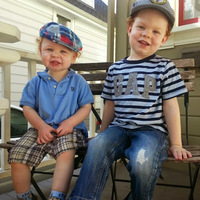Raz Rivlis - Profile on Academia.edu (original) (raw)

Related Authors
Uploads
Papers by Raz Rivlis
A newly designed UV spectrometer will replace the current 351 nm, full aperture backscatter (FABS... more A newly designed UV spectrometer will replace the current 351 nm, full aperture backscatter (FABS) spectrometer that is used in the OMEGA laser system. The FABS spectrometer has a time resolution of 270 ps. The new spectrometer will improve the temporal resolution to 10 ps, while maintaining signal throughput by superimposing 27 separate spectra onto the detector. This is accomplished by placing a 27-element roof mirror array between two identical diffraction gratings operating at opposite orders. The retro-reflecting property of the roof mirror array breaks the 270 ps pulse front tilt into 27 10 ps pulse front tilts. FRED, an optical design program, was used to model the spectrometer. Image rotation, pulse front tilt, and images from other grating orders were analyzed. It was found that image rotation can be corrected by rotating the input slit. The separation between the roof mirror array and the gratings was chosen to prevent images from other grating orders from reaching the det...
Nanoparticles are a class of particle between 1 and 100 nm large. They have a number of unique an... more Nanoparticles are a class of particle between 1 and 100 nm large. They have a number of unique and potentially useful properties. There has been interest in trying to control the alignment of large numbers of these particles. One method that is being explored involves attaching liquid crystal mesogens to the surface of the nanoparticles, and using the self aligning tendencies of liquid crystals to cause the nanoparticles to align. Currently, these systems are poorly understood. This project aims to model these liquid crystal decorated nanoparticles to better understand methods of controlling the alignment of the nanoparticles. A small number of these arrangements have been modeled previously by Silvia Orlandi and Claudio Zannoni [2013]. They modeled two systems, both with the same number of nanoparticles and liquid crystals, with the same particle parameters. The difference between the two systems were the attachment angles of the mesogens. The primary goal of this project is to exp...
A newly designed UV spectrometer will replace the current 351 nm, full aperture backscatter (FABS... more A newly designed UV spectrometer will replace the current 351 nm, full aperture backscatter (FABS) spectrometer that is used in the OMEGA laser system. The FABS spectrometer has a time resolution of 270 ps. The new spectrometer will improve the temporal resolution to 10 ps, while maintaining signal throughput by superimposing 27 separate spectra onto the detector. This is accomplished by placing a 27-element roof mirror array between two identical diffraction gratings operating at opposite orders. The retro-reflecting property of the roof mirror array breaks the 270 ps pulse front tilt into 27 10 ps pulse front tilts. FRED, an optical design program, was used to model the spectrometer. Image rotation, pulse front tilt, and images from other grating orders were analyzed. It was found that image rotation can be corrected by rotating the input slit. The separation between the roof mirror array and the gratings was chosen to prevent images from other grating orders from reaching the det...
Nanoparticles are a class of particle between 1 and 100 nm large. They have a number of unique an... more Nanoparticles are a class of particle between 1 and 100 nm large. They have a number of unique and potentially useful properties. There has been interest in trying to control the alignment of large numbers of these particles. One method that is being explored involves attaching liquid crystal mesogens to the surface of the nanoparticles, and using the self aligning tendencies of liquid crystals to cause the nanoparticles to align. Currently, these systems are poorly understood. This project aims to model these liquid crystal decorated nanoparticles to better understand methods of controlling the alignment of the nanoparticles. A small number of these arrangements have been modeled previously by Silvia Orlandi and Claudio Zannoni [2013]. They modeled two systems, both with the same number of nanoparticles and liquid crystals, with the same particle parameters. The difference between the two systems were the attachment angles of the mesogens. The primary goal of this project is to exp...







